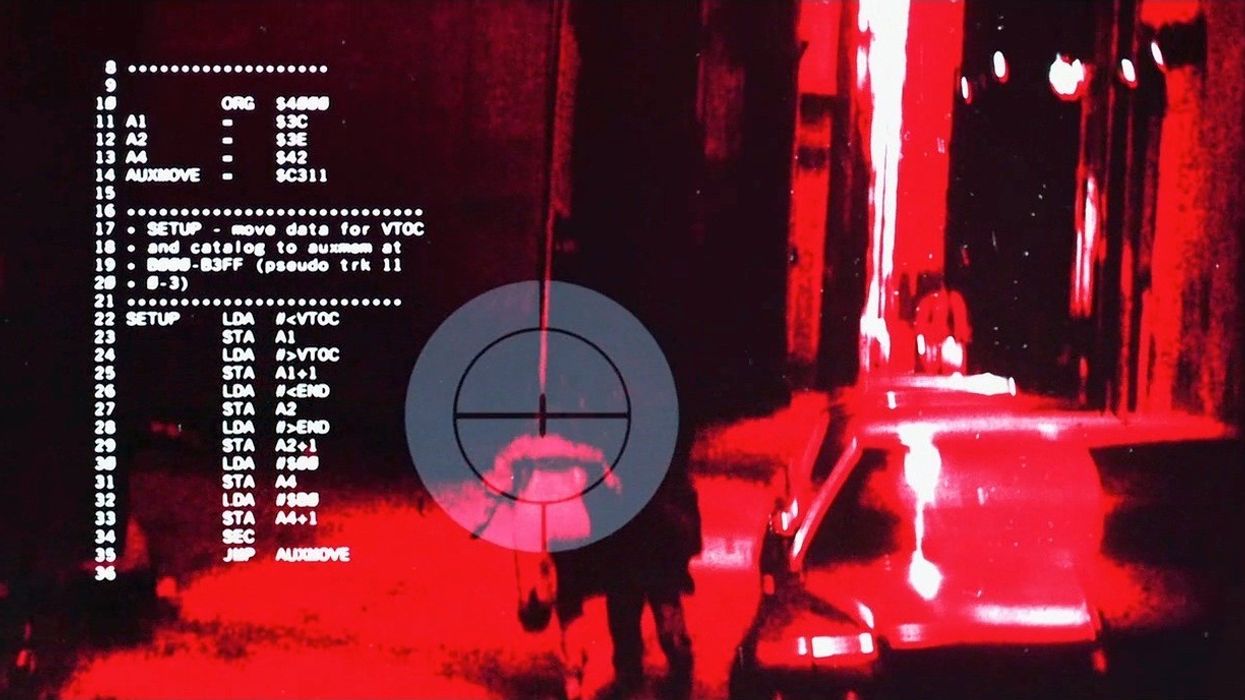Watch: The Geekiest Video Essay of All Time Reveals 'Terminator' Code
The mystery of what Arnold was looking at in those POV shots in 'The Terminator' is solved once and for all.

James Cameron is not a filmmaker who lets things slide. When he was preparing the 3D release of Titanic and got a "snarky email" from famed astrophysicist Neil deGrasse Tyson informing him the view of the night sky at the end of the film contained an inaccurate star-field (given the coordinates of the shipwreck and year), he went and fixed it—at considerable cost.
Skynet was written in the same language as the decidedly non-evil Oregon Trail.
So, it's no surprise that in the original Terminator film, whenever we see a shot from the T-800 (i.e., Arnold's) point-of-view, properly known as a Head-Up Display, the frantic code that accompanied his lightning calculations about leather jacket sizes and the location of Sarah Connor would not be random gibberish. Allow this helpful—and amazingly geeky—video from Behind the Screens, a YouTube channel devoted to the exploration of "computer screens in television and film" to explain:
The source code that flashes across the screen is, actually, source code from an Apple II computer, which makes sense, because, though the Macintosh was released in 1984, the same year as the original film, the Apple II had been around since the late '70s and so would have been a cutting-edge model to draw from when designing the aesthetic of a self-aware A.I. killing machine. In retrospect, of course, it is vaguely amusing to realize that Skynet was written in the same language as decidedly non-evil, and educational, programs like Oregon Trail.
The information was gathered by the good folks at Behind the Screens, who were just doing a public service considering that the very existence of a HUD on the T-800 model Terminator is a cause of consternation. A search of the actual Skynet, which we know as Google (it's funny now), led to the archives of Nibble Magazine, a now-defunct publication that served Apple II enthusiasts from 1980 to 1992. At the time, the Apple II was valued for the ease with which users could write their own programs, and the magazine frequently printed source code for these programs. And, as it turns out, this is what the Terminator is looking at. They've even tracked one shot's worth of data down to the September, 1984 issue of Nibble:
The video also goes into detail on several other shots and the origin of the code therein, and the whole thing is a fascinating footnote to movie history and a testament to the heroic tenacity of fans, as well as the verging on madness perfectionism of one Mr. James Cameron. We imagine that he will, in all likelihood, now be forced to go back and update the display in the original film (and probably its sequel), at considerable expense, so as to more faithfully reflect current computational linguistics. Luckily for him, though, the model of Terminator in question isn't scheduled to be developed by Skynet until 2018, so he has some time. And lucky for us, Google won't become self-aware for like, at least six months, so we're good.
Source: Behind the Screens











![Ethos, Pathos, Logos: 20 Effective Ways to Advertise [Infographic]](https://nofilmschool.com/media-library/ethos-pathos-logos-20-effective-ways-to-advertise-infographic.jpg?id=34064614&width=600&height=600&quality=90&coordinates=560%2C0%2C0%2C0)

